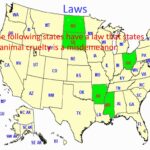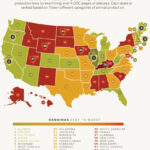In the realm of animal welfare, the push for comprehensive legislation aimed at curbing animal cruelty often elicits intense discourse. Notably, within the liberal camp, there exists a contingent that staunchly opposes certain iterations of the Animal Cruelty Bill, and this opposition is grounded in a labyrinth of ethical considerations, pragmatic implications, and philosophical foundations. To decipher the motivations behind this dissent necessitates a meticulous examination of the ideological infrastructure that underpins liberal thought, ultimately revealing a complex tapestry woven from threads of liberty, consequence, and moral precedent.
At the heart of the debate lies an intrinsic belief in personal and collective autonomy. This reverberates with the notion that one’s rights—including the rights of animals—should not infringe upon the liberties of others. Some liberals perceive the Animal Cruelty Bill as a potential overreach of governmental power, a paradigm in which the state attempts to regulate ethical considerations deeply rooted in personal philosophy. The essence of this perspective likens animal rights to a double-edged sword—while intended to protect the vulnerable, it could inadvertently slice into the fabric of individual freedoms.
Consider the metaphor of a tightrope walker, precariously balanced between the desire for ethical consistency and the overarching fear of governmental encroachment. On one side, the call for compassion toward sentient beings echoes like a siren’s song, compelling the listener toward action. On the other, the fear of a fragmented society, where laws dictate morality, looms large. Thus, some liberals find themselves teetering on this precarious line, unsure of how to reconcile these competing moral imperatives.
Moreover, a notable concern surrounds the potential ramifications of legislating animal rights. The fear of unintended consequences is palpable. Could the imposition of stringent regulations on animal treatment not only lead to a cascade of administrative burdens but also have detrimental effects on industries reliant on animal agriculture? Many liberals articulate that the bill, while well-intentioned, might send shockwaves through the economy. The metaphor of a domino effect vividly captures this apprehension—one law could set off a chain reaction, resulting in unforeseen hardships for farmers and consumers alike.
The historical context further intensifies the debate. The annals of legislation often reveal instances where well-meaning policies have faltered, caught in a web of bureaucratic mismanagement and misinterpretation. Herein lies another layer of the liberal critique; they may invoke the past, utilizing it as a cautionary tale. Just as a seasoned sailor respects the tempestuous nature of the sea, approaching it with regard and prudence, so too do some liberals advocate for a measured approach to animal rights legislation—recognizing complexity and avoiding oversimplification.
Culturally, the symbols and narratives surrounding animal rights have morphed multifariously. To some, the fight for animal welfare intertwines seamlessly with broader social justice movements, drawing parallels to civil rights and environmentalism. However, others caution against conflating these issues, believing it risks diluting the urgency of each cause. The metaphor of a tapestry once again serves to illustrate this point—while diverse threads contribute to an intricate pattern, losing focus on one thread can render the entire fabric weaker. The concern here is that the animal cruelty bill might overshadow concomitant struggles for human equity, creating fractures within the progressive movement.
As the discourse evolves, the notion of effective advocacy remains at the forefront. Some liberals propose alternative pathways that prioritize education and awareness over legislative mandates. This perspective suggests that fostering a cultural shift—where compassion for animals burgeons from grassroots mobilization—is far more conducive to long-term change than a top-down approach. By likening advocacy to gardening, the idea here is to nurture a fertile environment in which empathy can take root, as opposed to imposing rigid laws that may alienate potential allies.
Nonetheless, such a path is not devoid of challenges. The mettle of the liberal critique falters when confronted by the urgency of the animal welfare crisis. For many activists, the time for gradual change has ceased; the clarion call for immediate action resonates loudly in the face of rampant cruelty. However, herein lies the dichotomy: speed versus sustainability in advocacy. The metaphor of a flash flood contrasting with a steady stream aptly encapsulates this tension—both can carry significant force, yet only one ensures longevity without eroding the landscape.
Furthermore, discourse surrounding intersectionality gives rise to pivotal questions about whose voices are elevated in the pursuit of animal rights. Some liberals raise pertinent inquiries about representation within the movement, asserting that the dialogue often hinges on a Westernized perspective that may neglect other cultural interpretations of animals and their roles. This critique illuminates the necessity for a nuanced conversation, one that transcends mere legal parameters and accesses deeper philosophical inquiries about the human-animal bond.
Ultimately, the divergence amongst liberals regarding the Animal Cruelty Bill reflects the intricate interplay of ethics, pragmatism, and ideology. It is a vivid reminder that the pursuit of justice—be it for humans or animals—is fraught with complexities that defy simplistic solutions. As the conversation unfolds, may it happen not in echo chambers but in the open arena, where ideas can clash and coalesce, borne onward by the winds of compassion and critical analysis. In this endeavor, both action and deliberation must coexist, carving pathways toward collective well-being in which neither individual liberties nor animal rights are sacrificed on the altar of legislative ambition.








